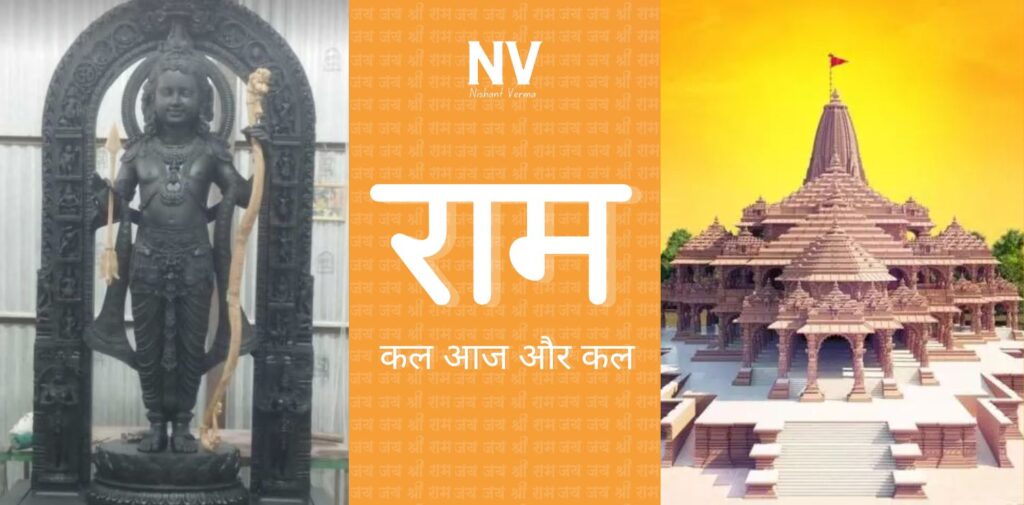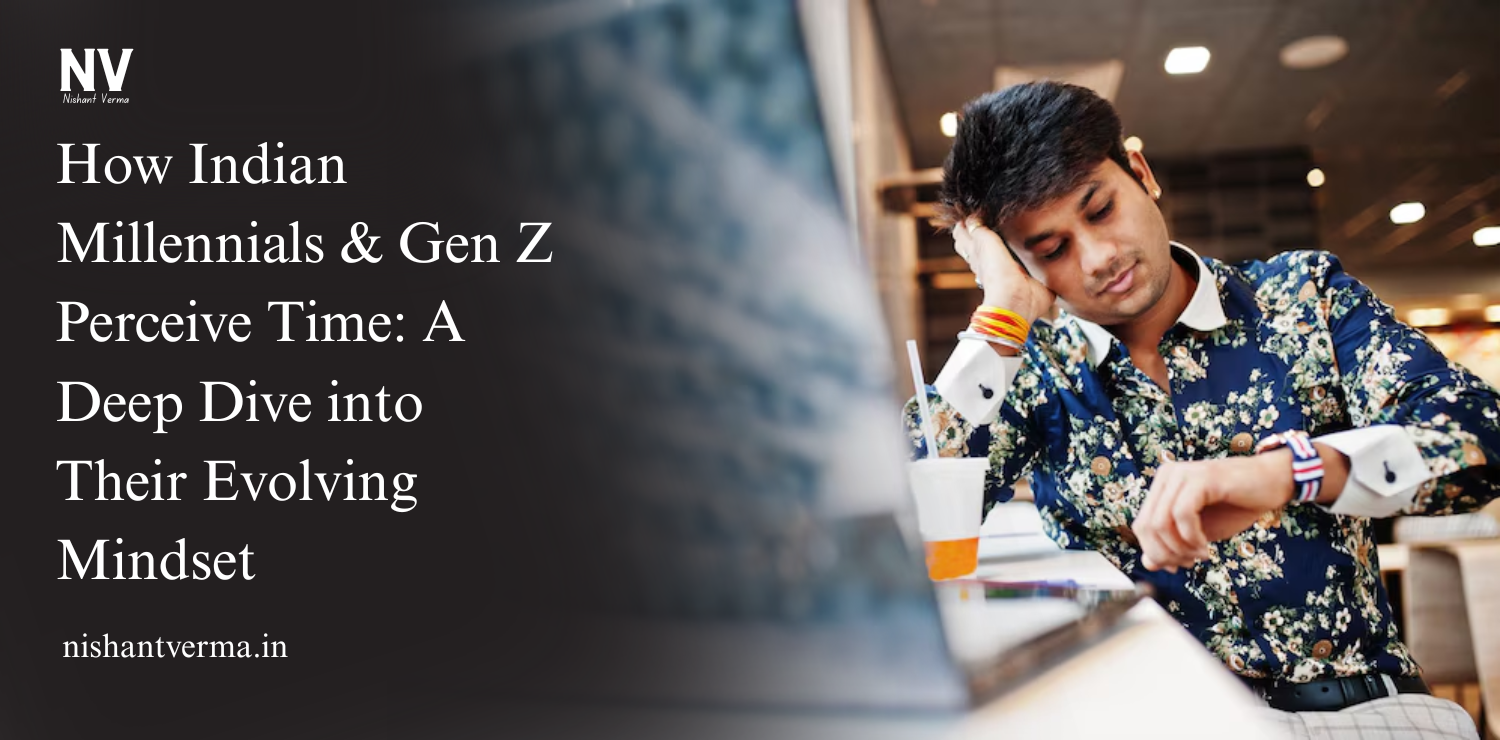Have you ever felt a deep yearning for something sacred, something that resonates with the soul of a nation? Picture this – a desire for justice, the restoration of a holy space, and the achieving echo of faith after a long wait. In the auspicious year of 2024, India’s soulful yearning finds its melody in the grand inauguration of the Ram Mandir – a symbol of devotion, sacrifice, and the victory of Sanatana Dharma.
Let’s journey back to an era filled with legends, an era where the brave prince, Lord Rama of Ayodhya, walked the earth, inspiring epic sagas like the Ramayana. His birthplace, Ram Janmabhoomi, resonated with the divine laughter of a destined king, a virtuous embodiment, and a beacon of hope.
However, the tale took a dark turn. For over five centuries, Ram Janmabhoomi faced strife, replacing prayers with discord and staining the sacred soil with shadows of injustice. But under it all, the embers of faith persisted.
Generations rose and fell, carrying the torch of hope. Devotees faced hardships, and legal battles were fought with conviction. Yet, the belief in Lord Rama and the sanctity of his birthplace took.
Now, as the inauguration day approaches, a collective sigh of relief sweeps the nation. The Ram Ram Mandir, a magnificent symbol of faith and resilience, stands tall in Ayodhya. Its carvings tell tales of devotion; its spires reach for the heavens, silent prayer in stone.
This temple is more than stone and mortar; it’s a symbol. A celebration of Sanatana Dharma, the endless way of life.
But this is just the beginning. In the chapters ahead, we’ll explore the Ram Mandir’s saga – its historical significance, architectural marvels, and its impact on India’s cultural landscape. We’ll trace Lord Rama’s footsteps, unravel Sanatana Dharma’s mysteries, and understand why the Ram Mandir’s inauguration isn’t just a victory for faith but an affirmation of India’s eternal spirit.
So, buckle up, dear friend, and join us on this exciting journey. Let the Ram Ram Mandir be our guide, its story our compass, as we embark on a pilgrimage to rediscover India’s essence, the magic of Sanatana Dharma, and the unwavering power of faith. Get ready to dive into a tale that transcends time and resonates with the beating heart of a nation.

Bringing Back Lord Ram’s Home: Ram Janmabhoomi
Imagine the quiet sadness lingering for five centuries across Ayodhya’s holy plains. Picture the very ground where Lord Ram once walked, a symbol of faith now replaced by the Babri Masjid—a structure marking conquest that stands on the sacred land of Ram Janmabhoomi. Can you feel the sorrow of Hinduism, like a child separated from its home, its spirit longing for the cradle of faith, stolen and silenced?
Is it just fanaticism that stirs the hearts of millions? No, it’s an honest desire to reclaim history, a wish to hear temple bells ring once more in the place where their beloved Lord was born. Those who call this fanaticism miss the deep pain from five hundred years ago—the quiet tears of generations, the prayers said in the dark, and the hope that never faded.
To call this feeling fanaticism is like saying a river is fanatical for flowing back to its source—it’s a natural, almost spiritual, need. Hinduism, unlike its self-proclaimed “superior” counterpart, embraces diversity. It weaves a vast tapestry from countless threads, absorbing, transforming, and thriving on the many different aspects others try to suppress. How could it not rise against attempts to erase its roots?
Now, after 500 years, justice is served. The building begins not as a sign of hatred but as a song of resilience. Each stone laid is a whisper of prayer, a brick in the bridge leading Lord Ram back to His rightful home. In this significant return, there’s no fanaticism, only the quiet triumph of a culture enduring centuries, standing strong and undying.
What follows is not just a temple; it’s the powerful anthem of Sanatan Dharma rising eternal by the Sarayu river. Call it what you want—fanaticism, triumphalism, vindication. For us, it’s a son returning home, a stolen legacy being restored. Despite any controversy, in India, Hindu Dharma remains the highest priority—a cultural stronghold destined to persist and flourish.
Now, think about the Babri mosque, built after tearing down a temple at Lord Ram’s birthplace, becoming a significant point for Hindus. Some say celebrating the construction of “Ram Mandir” is just Hindu fanaticism, but that’s not true. There’s no such thing. Unlike radicalized Islam, which claims the superiority of Allah, Hinduism embraces diversity without losing its uniqueness.
In history, Babur, the founder of the Mughal Empire, linked to warlords like Timur and Genghis Khan, ordered the mosque’s construction. Although the Babri Masjid’s construction date is uncertain, on August 5, 2020, the Modi government corrected a 500-year-old wrong, returning Lord Ram’s birthplace to its rightful glory. Understanding Babur’s role is crucial in appreciating this historical event, showcasing the victory of Hindu resilience.

Why No Goddess Sita Idol in Ram Mandir?
Get ready for a simple and exciting journey into Ayodhya’s Ram Temple! As the temple gets ready for its big day on January 22, 2024, here’s a fascinating tidbit: there won’t be a Mata Sita idol alongside Lord Rama. Wondering why? Let’s find out in an easy and fun way.
The Ram Temple isn’t just about Lord Rama—it’s a hub of activity with seven more temples dedicated to important figures around. But why is there no statue of Goddess Sita in the main temple? To uncover the mystery, we’ll explore a verse from Ramcharitmanas that talks about Rama and Sita’s companionship.
Champat Rai, the person in charge, spills the beans: the central area where baby Ramlala will be placed won’t have any Mata Sita idol. Only Ramlala’s idol, looking like a 5-year-old child, will be there. Why? Because this form represents Lord Rama before he got married at 27.
So, get ready to unravel the mystery behind this unique choice. It’s like peeking into a story where every stone in the temple has a tale, and the absence of Mata Sita becomes a symbol of Lord Rama’s innocent, young self. Stay with us to discover Ayodhya’s enchanting secret—it’s going to be a fun ride!
Is Congress Missing the Essence of Indian Culture by Skipping Ram Ram Mandir? A Closer Look at Their Stand
Is it possible that the Congress party is harming the rich tapestry of Indian culture by choosing to skip the Ram Mandir event? Let’s delve into this with a critical eye.
- A Questionable History: Hindering Hindu Sentiments Is the Congress party, with its roots traced back to Jawaharlal Nehru, unintentionally demoting Indian culture? Nehru’s disapproval of Rajendra Prasad’s presence at the Somnath Mandir event and subsequent events like the suppression of anti-cow slaughter protestors and the 2007 affidavit denying historical proof of Ram raise questions about the party’s stance on Hindu sentiments.
- Hypocrisy Unveiled: Boycotting as a BJP/RSS Event The Congress party’s decision to label the Ram Mandir event as a “BJP/RSS” affair seems contradictory. They’ve criticized the BJP in the past and attempted to credit the SC judgment for the temple construction. This raises eyebrows about the true motivation behind their boycott.
- Religious Matters: A Personal Choice or Political Strategy? Congress claims that religion is a personal matter, yet their engagement with religious leaders before elections, state-funded Iftaar parties, and control over temples in Congress-ruled Karnataka contradicts this stance. Is there more to their decision than meets the eye?
- Distracting from Real Concerns? Or Missing the Pulse of the Nation? The argument that the Ram Mandir issue distracts from real concerns is debatable. Recent state elections have shown voters prioritizing issues like unemployment and inflation. Is Congress missing an opportunity to connect with people by choosing to stay away from an event that holds cultural significance?
- A Cultural Symbol: Congress’s Self-Destructive Move: The Ram Sita Mandir, representing Hindu and Sanatan Dharma, symbolizes both heritage and progress. Congress’s decision to boycott this significant event appears self-destructive, distancing them from the cultural and spiritual fabric deeply woven into India’s identity. Does this signify a lack of understanding or appreciation for the essence of Indian culture within the Congress party?
As we reflect on Congress’s stance on the Ram Mandir event, it raises a big question mark. Is there a disconnect with Indian culture, or are there deeper reasons behind their decision? The answers might lie in the party’s history, their approach to religious matters, and how well they understand the pulse of the nation.
Celebrating Our Culture: Joyful Victory for True Hindus
As we cheer for the opening of Ayodhya’s Ram Sita Mandir on January 22, 2024, it’s like a big party for all of us who believe in Sanatan Dharma. The temple isn’t just a building; it’s like a happy symbol showing how strong our beliefs are.
Each stone in Ayodhya tells a story, and even the temple’s design has a tale. There’s no statue of Goddess Sita, and that’s a bit like looking at Lord Rama when he was just a little kid. It’s kind of cute!
But, you know, the Congress party decided not to join the celebration. It’s like they’re missing out on the fun. We wonder why—they say religion is a personal thing, but they seem to forget that sometimes. Maybe they’re not as excited about our culture as we are.
For us, this isn’t just a celebration; it’s like a victory dance for our beliefs. We’re so happy to see the Ram Ram Mandir standing tall. It’s not about showing off; it’s more like saying, “Hey, we’re here, and our culture matters!”
And, you know, there’s a bit of sadness for those who didn’t join the party. It’s like they’re missing the best song in the playlist. We want to ask them, “Are you really a part of this celebration? Are you proud to be Hindu and Indian?”
As we enjoy this happy moment, let’s keep the joy alive. The Ram Mandir is like our cultural superhero, and we’re proud to be a part of this incredible story. Here’s to celebrating our culture, our beliefs, and the victory of Sanatan Dharma!




